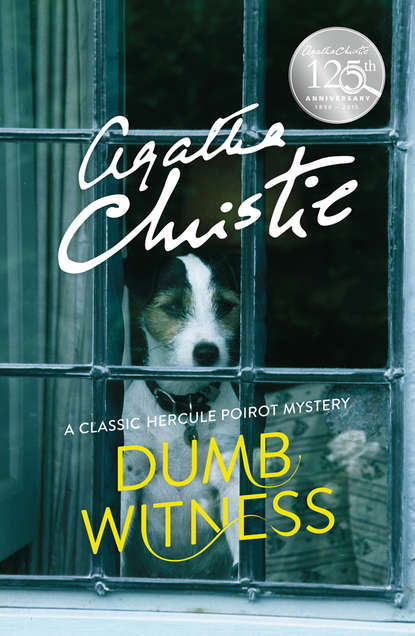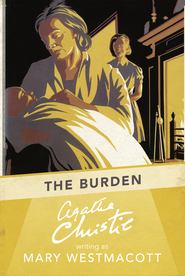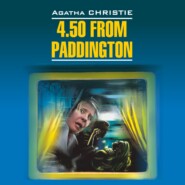По всем вопросам обращайтесь на: info@litportal.ru
(©) 2003-2025.
✖
Dumb Witness
Автор
Год написания книги
2019
Настройки чтения
Размер шрифта
Высота строк
Поля
‘Not in the least, my friend.’
He turned in an unexpected direction.
‘Where are you off to now, Poirot?’
‘The church, my friend. It may be interesting. Some brasses—an old monument.’
I shook my head doubtfully.
Poirot’s scrutiny of the interior of the church was brief. Though an attractive specimen of what the guidebook calls Early Perp., it had been so conscientiously restored in Victorian vandal days that little of interest remained.
Poirot next wandered seemingly aimlessly about the churchyard reading some of the epitaphs, commenting on the number of deaths in certain families, occasionally exclaiming over the quaintness of a name.
I was not surprised, however, when he finally halted before what I was pretty sure had been his objective from the beginning.
An imposing marble slab bore a partly-effaced inscription:
SACRED
TO THE MEMORY OF
JOHN LAVERTON ARUNDELL
GENERAL 24TH SIKHS
WHO FELL ASLEEP IN CHRIST MAY 19TH 1888
AGED 69
‘FIGHT THE GOOD FIGHT WITH ALL THY MIGHT’
ALSO OF
MATILDA ANN ARUNDELL
DIED MARCH 10TH 1912
‘I WILL ARISE AND GO TO MY FATHER’
ALSO OF
AGNES GEORGINA MARY ARUNDELL
DIED NOVEMBER 20TH 1921
‘ASK AND YE SHALL RECEIVE’
Then came a brand new piece of lettering, evidently just done:
ALSO OF
EMILY HARRIET LAVERTON ARUNDELL
DIED MAY 1ST 1936
‘THY WILL BE DONE’
Poirot stood looking for some time.
He murmured softly:
‘May 1st… May 1st… And today, June 28th, I receive her letter. You see, do you not, Hastings, that that fact has got to be explained?’
I saw that it had.
That is to say, I saw that Poirot was determined that it should be explained.
CHAPTER 8 (#ulink_e82b0e95-93e9-5791-9d36-3c6b02cbdd21)
Interior of Littlegreen House (#ulink_e82b0e95-93e9-5791-9d36-3c6b02cbdd21)
On leaving the churchyard, Poirot led the way briskly in the direction of Littlegreen House. I gathered that his role was still that of the prospective purchaser. Carefully holding the various orders to view in his hand, with the Littlegreen House one uppermost, he pushed open the gate and walked up the path to the front door.
On this occasion our friend the terrier was not to be seen, but the sound of barking could be heard inside the house, though at some distance—I guessed in the kitchen quarters.
Presently we heard footsteps crossing the hall and the door was opened by a pleasant-faced woman of between fifty and sixty, clearly the old-fashioned type of servant seldom seen nowadays.
Poirot presented his credentials.
‘Yes, sir, the house-agent telephoned. Will you step this way, sir?’
The shutters which I had noticed were closed on our first visit to spy out the land, were now all thrown open in preparation for our visit. Everything, I observed, was spotlessly clean and well kept. Clearly our guide was a thoroughly conscientious woman.
‘This is the morning-room, sir.’
I glanced round approvingly. A pleasant room with its long windows giving on the street. It was furnished with good, solid, old-fashioned furniture, mostly Victorian, but there was a Chippendale bookcase and a set of attractive Hepplewhite chairs.
Poirot and I behaved in the customary fashion of people being shown over houses. We stood stock still, looking a little ill at ease, murmuring remarks such as ‘very nice.’ ‘A very pleasant room.’ ‘The morning-room, you say?’
The maid conducted us across the hall and into the corresponding room on the other side. This was much larger.
‘The dining-room, sir.’
This room was definitely Victorian. A heavy mahogany dining-table, a massive sideboard of almost purplish mahogany with great clusters of carved fruit, solid leather-covered dining-room chairs. On the wall hung what were obviously family portraits.
The terrier had continued to bark in some sequestered spot. Now the sound suddenly increased in volume. With a crescendo of barking he could be heard galloping across the hall.
‘Who’s come into the house? I’ll tear him limb from limb,’ was clearly the ‘burden of his song’.

















